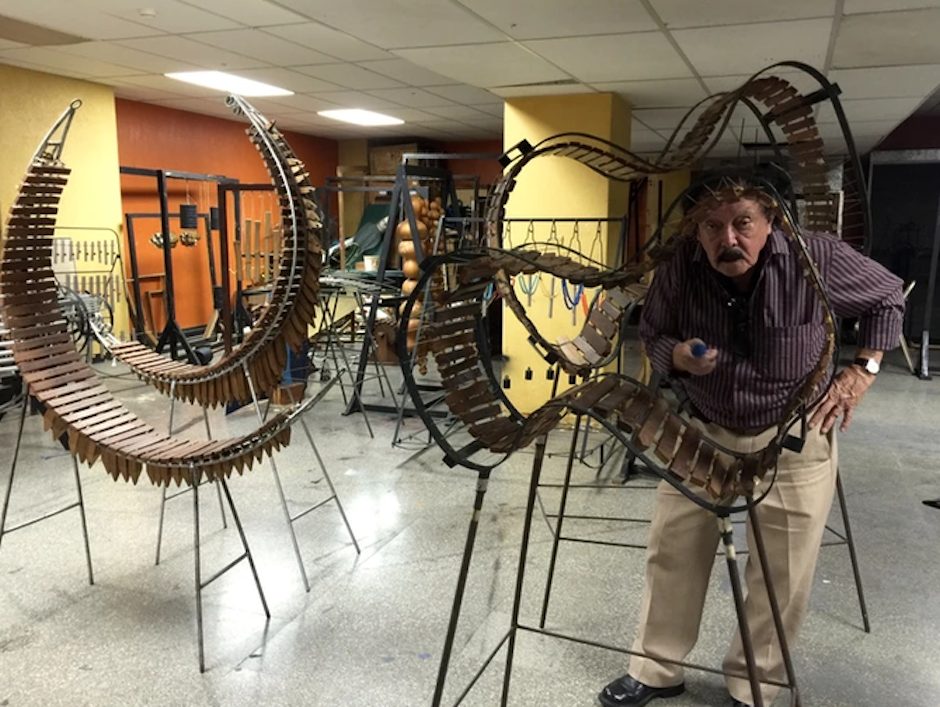Joaquín Orellana
Joaquín Orellana is one of Guatemala’s pioneering modern composers.

Joaquín Orellana
With his Utiles Sonoros, a series of custom built instruments that double as fascinatingly beautiful sonic sculptures, he developed a novel way of creating sound in the late ‘60s. Merging various percussive sounds with poetry, complex choral work and local folklore, Orellana’s music is both modern and primitive, with a powerful spiritual dimension.
His work also has a strong political quality, using his often abstract compositions to convey a dissident yet moving message in reaction to the many injustices and state oppression. Numerous Latin American composers from younger generations would be influenced by his approach, giving birth to an entire genre where music was both socially-conscious and heavily inspired by local folklore and history.
Until now, Orellana’s work was largely unavailable in recorded audio format, being more often performed live or showed in a museum.
Sacratávica brings together four of his iconic compositions from the ‘70s through the 2010s, for the first presented in a high-quality recording and packaging. This is not just the portrait of a unique composer but a historical release.
Biography
In 1973, Orellana, as well as other Guatemalan composers such as Enrique Anleu Díaz, began experimenting with electroacoustic music with analog technology. However, as he himself points out, after his stay at CLAEM, he suffered a 'reverse crisis' in his native country, since the avant-garde music that was heard in Europe and other countries did not have any reception. in Guatemala; However, he also did not want to make music based on Creole music because he would become an outdated composer. However, through a mix of the compositional techniques he had learned and the sounds of his country he was able to find his own style, which materialized with the Humanofonías , musical works that captured the Guatemalan soundscape and the techniques of concrete music. and electroacoustics
In 2012, Mexican visual artist Carlos Amorales and Julián Lede were commissioned to create an audio-visual version of an Orellana score for a Walt Disney animated film. This film was made with shadows projected on a screen along with the shapes of the composer's instruments, as well as the notations of his works.
